Mentors are wise and trusted advisors. They share knowledge in a way that helps the mentee to achieve their personal or professional goals.
Imagine you have been asked to introduce a mentoring programme within your own organisation. How can you do this successfully? Here is an overview of three steps you may wish to consider.
You can set up the mentoring
programme to succeed
Start by getting the backing of the leadership team. They may believe that mentoring is a good thing, but is still vital to get their support.
If possible, get a two hour meeting with the leadership team. Start by restating why the organisation is planning to introduce mentoring. You can then invite people to tackle and present their answers to the following exercises.
Mentoring – The Benefits
Invite people to outline the benefits of mentoring for the organisation, the mentee and the mentor. Their answers may include some of the following points.
The benefits for the organisation are that it will pass on corporate wisdom and enable the mentees to develop. It may also act as a good retention tool.
The benefits for the mentee are that they can take time out, see things in perspective and make better quality decisions. They will also expand their repertoire of tools for achieving success.
The benefits for the mentor are that they will clarify their knowledge, because the best way to learn is to teach. They will also learn more about what is happening in their organisation and may get energy from their mentees.
The Mentoring Charter
Invite people to outline what they believe the mentor’s role is and isn’t. This will also help to define the role of mentoring in the organisation.
Different organisations have different definitions about the difference between mentoring and coaching. These definitions can also vary across the world.
Below are the definitions that one company gave regarding mentoring and coaching. Other companies reverse the two columns. This does not mean that either view is right or wrong, because it is possible to have long discussions about the semantics.
The main thing is for everybody to be clear on the differences between mentoring and coaching in their own organisation. The mentees then know how to get the best from the sessions.
The company mentioned earlier believed that mentors could help people to take a helicopter view and focus on the strategy for achieving their goals. Coaches could then help people to master the on-the-job skills required to achieve success.
The company believed that mentoring worked best when the mentee chose the mentor, preferably somebody outside the line. Coaching often took place within the line from the team leader.
One key point is worth mentioning. The two columns outlined above came with a caveat.
The mentor’s role was to pass on knowledge and practical tools the mentee could use to achieve success. This meant that sometimes the sessions helped the person to add to their repertoire of skills for achieving their strategic goals. The two columns, however, proved to be a useful guide for people.
Building on these definitions, the company included the following points in their mentoring charter. This helped the mentees to know what they could and could not expect from the sessions.
The mentor’s role is to focus on the mentee’s agenda, to act as a confidential sounding board and to pass on tools the mentee can use to achieve their goals.
The mentor’s role is not to act as a political door opener, to replace management or to communicate confidential information about people.
If you wish, invite people in the leadership team to complete the following exercise.
Mentoring – The
Respective Responsibilities
Building on these answers, invite people to outline both the mentor’s and mentee’s responsibilities. Here is the approach taken by one company.
The mentor’s responsibility is to make sure they really want to be a mentor, because it is a big commitment. It is to complete a mentor profile and describe what they can and can’t offer as a mentor. It is to familiarise themselves with our model for facilitating a mentoring session.
The mentee’s responsibility is to drive the process, familiarise themselves with our mentoring model and prepare properly for the sessions. It is also to attend a mentee workshop.
You can educate the
mentors and mentees
Imagine that you have got the leadership team’s support. You can then begin building your mentoring faculty. Explain what is and isn’t expected of a mentor and invite selected people to attend a mentor’s workshop.
Good organisations provide education for both the mentors and mentees. The mentors are encouraged to use their own personalities, but it is also vital they agree on some Dos and Don’ts regarding mentoring.
Many years ago an organisation called me to say they had hit trouble with their mentoring programme. The Managing Director explained this in the following way.
“We have launched a mentoring programme, but we may have made a mistake. The senior managers have started running sessions, but they are all using different approaches.
“Some are acting as supervisors, some are sharing anecdotes and some are practicing deep therapy. Can you create a model that everybody understands, but that acts as a framework not as a straitjacket?”
Building on what works, we educated people to use the Three C Model for facilitating the mentoring sessions. This provided a common framework, but also encouraged the mentors to express their personalities.
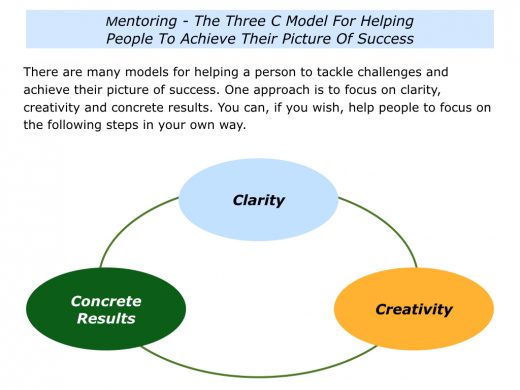
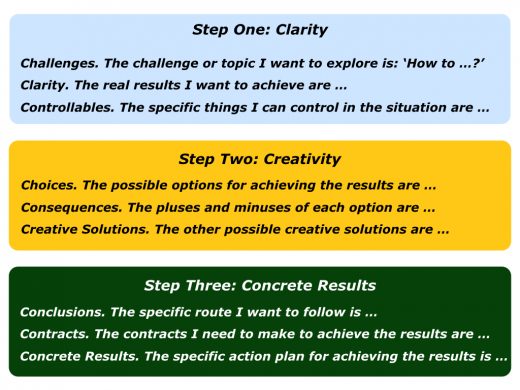
The mentors attended a one day workshop that provided practical tools they could use:
To clarify the qualities of good mentors.
To clarify how to build on their own strengths as mentors.
To clarify how to make clear working contracts with their mentees.
To clarify how to use the Three C Model for running a mentoring session.
To clarify how to help the mentees to tackle specific challenges and achieve success.
You can discover more about this approach to running a mentoring session via the following link.
http://www.thepositiveapproach.global/the-mentoring-approach/
The mentees also attended a one day workshop. This focused on how they could make the best use of their mentor and the mentoring sessions. It provided practical tools they could use:
To clarify the qualities they wanted in their mentor.
To clarify what they could and could not get from the mentoring and make clear working contracts with their mentor.
To understand the Three C Model for running a mentoring session.
To drive the process and prepare properly for the sessions.
To make good use of the sessions and apply the learning in their own ways to achieve success.
You can discover more about how the mentee’s can get the most from mentoring sessions via the following link.
http://www.thepositiveapproach.global/m-choosing-mentor-making-good-use-mentoring-sessions/
Different organisations use different approaches to running internal mentoring programmes. There are two common themes, however, that seem to work.
The mentee needs to choose the mentor. It important for the mentee to choose somebody with whom they have a values fit.
The mentee needs to drive the process. Looking at the potential mentors, the mentee sets up an initial informal meeting. If both people get along, they make clear contracts about the following themes:
The goals the mentee wants to achieve from the mentoring.
The kinds of challenges the mentee wants to explore.
The specific things the mentor can and cannot offer.
The frequency and length of the sessions.
The specific things the mentee will do to clarify what they are learning and how they are applying these ideas to achieve success.
You can implement the mentoring
programme successfully
Good organisations provide a clear framework. They then encourage the mentees and mentors to make it work for them. There are two other points worth bearing in mind.
Mentors also need encouragement. So you can provide support by creating the opportunity for them to meet with external mentors. They can also attend advanced mentoring workshops.
It is also vital to provide evidence that the mentoring is working. This brings us to the old question: “How do you measure the effects of the mentoring?”
At first sight this is difficult to answer. We often look back in later years, for example, and realise the mentor we had was invaluable in our development, but it was hard to quantify the value at the time.
Nevertheless, it is vital to provide some evidence that mentoring is benefiting the organisation. One HR director said, for example:
“Three months ago I received a note from one of our highly promising stars. She explained that she would have left the company if it had not been for her mentor.
“Replacing her would have cost us over £30k in search fees, plus the time it takes to get somebody up to speed. Fortunately the mentoring enabled her to create a new role in the business.
“Mentoring is not always measurable, but in this case it produced real financial results.”
How to collect the success stories? One approach is to ask the mentees to complete a feedback form every quarter. Within the bounds of confidentiality, they can complete the following exercise.
Mentoring can produce many benefits, but the key is to introduce it properly. You will then give everyone the greatest chance of success.
Imagine you have been asked to implement a mentoring programme into your organisation. If you wish, try tackling the exercise on this theme. This invites you to do the following things.
Describe the specific things you can do to implement a successful mentoring programme in your organisation.
Describe the specific benefits of implementing a mentoring programme successfully.


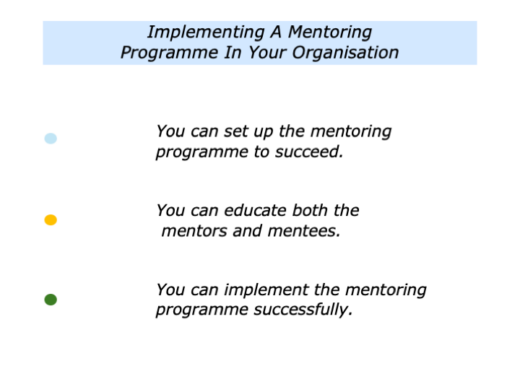
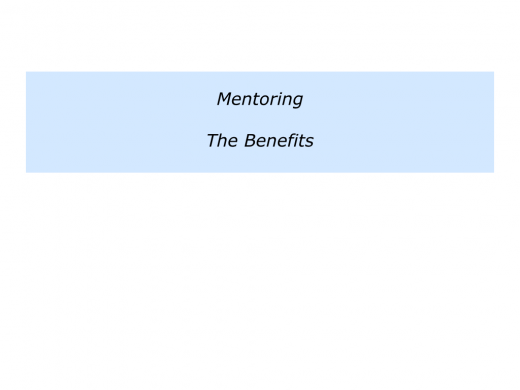
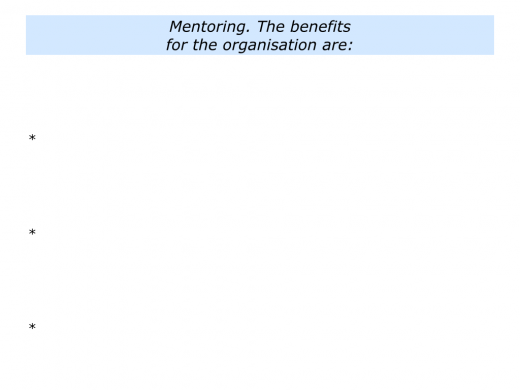
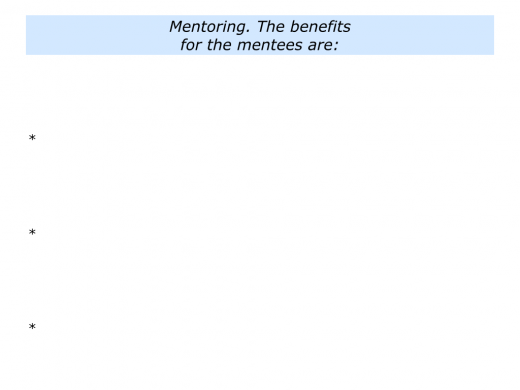
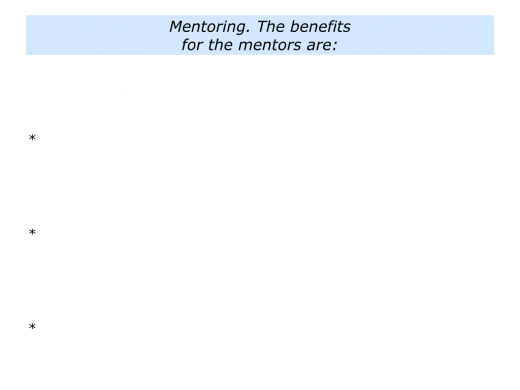
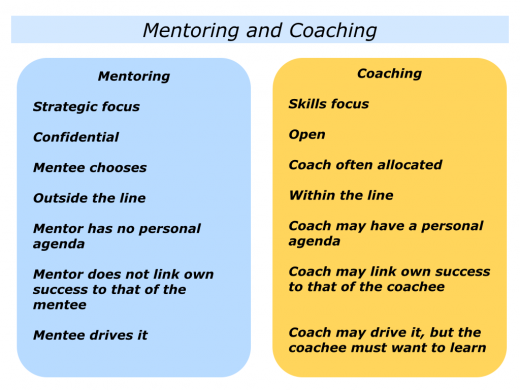
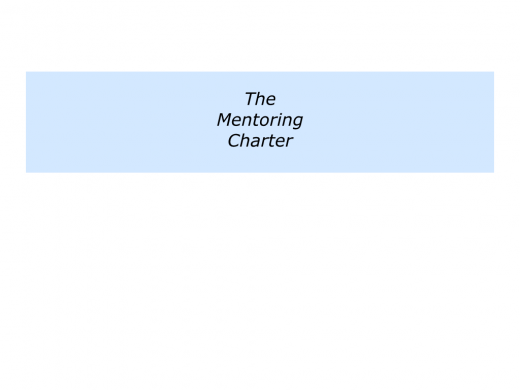
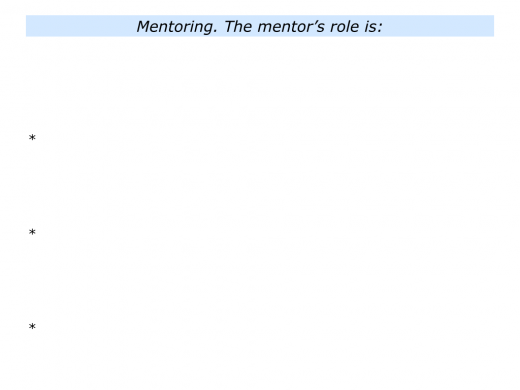
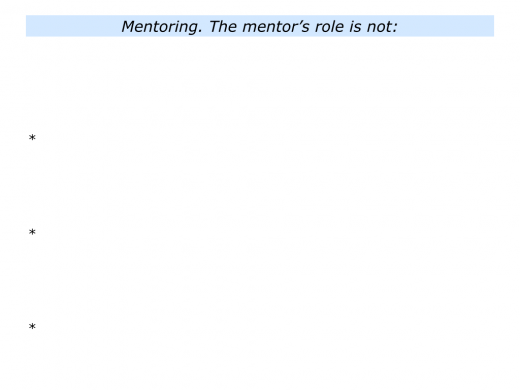
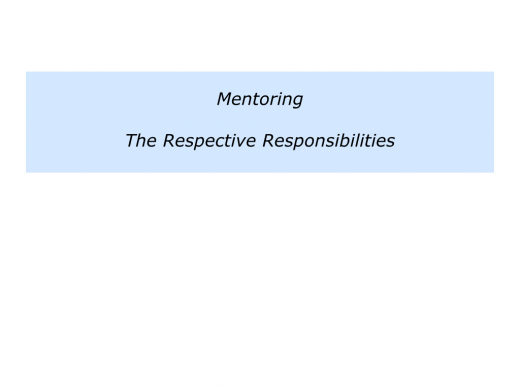
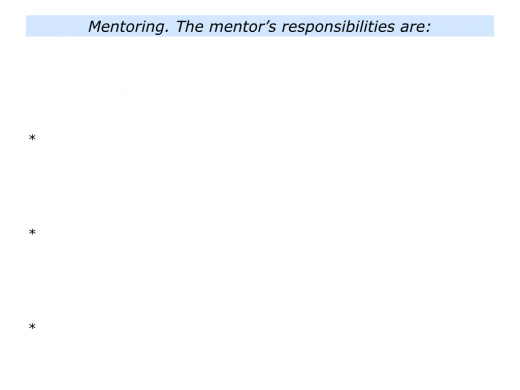
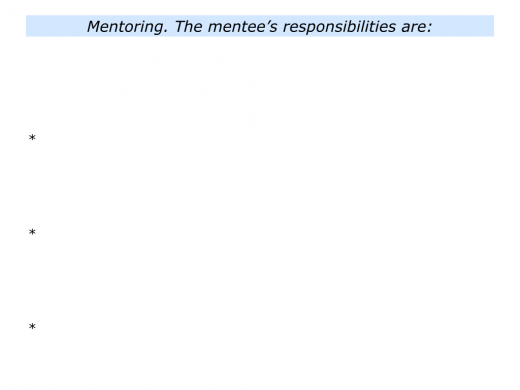
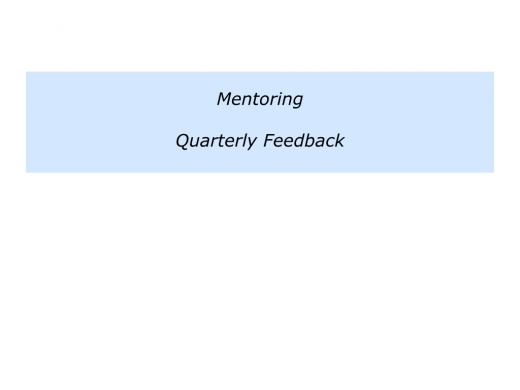
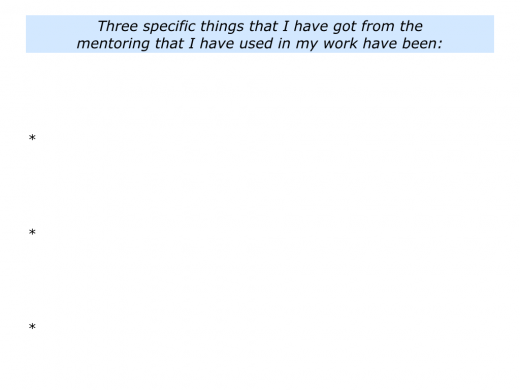
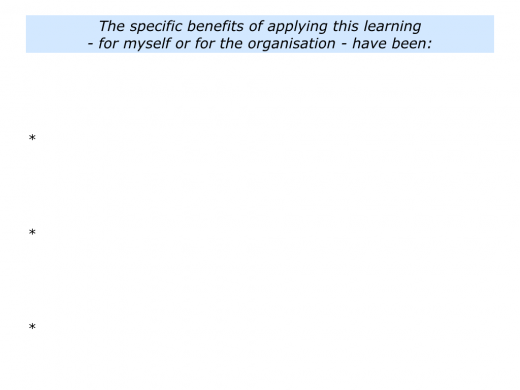
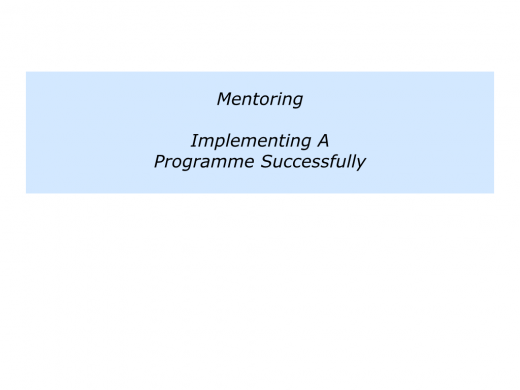
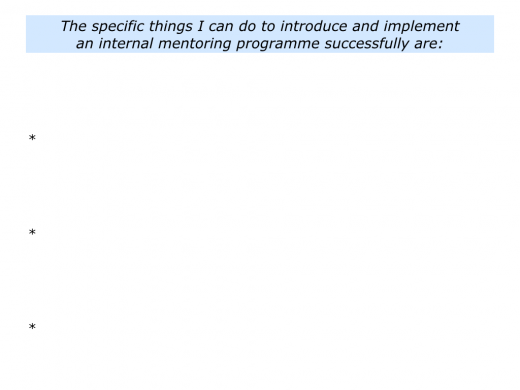
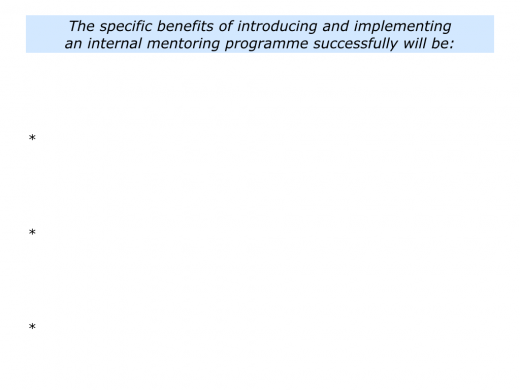




Leave a Reply